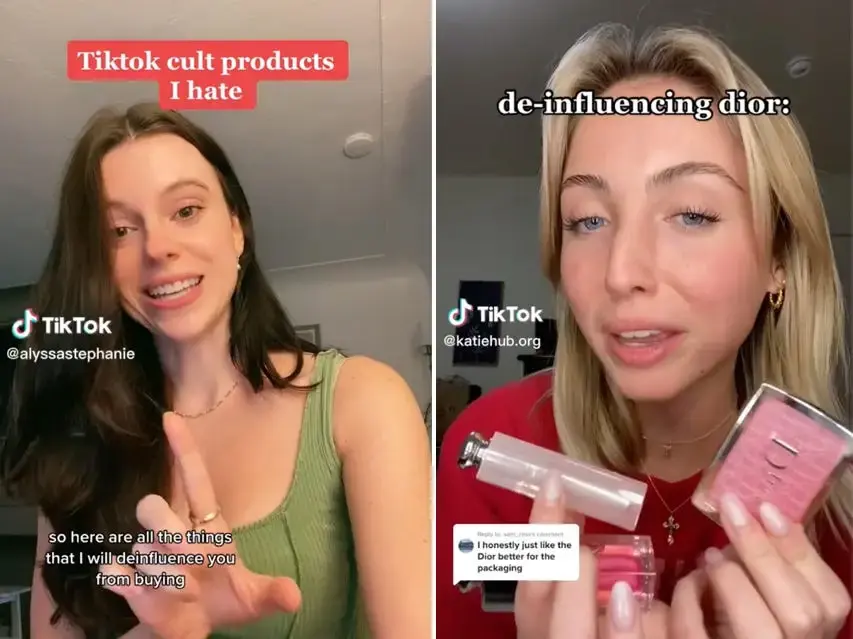Join the Radiant list!
Get expert insights, fresh ideas, and our founder’s VIP
notes on brand growth sent straight to your inbox.
De-Influencing Is Here: How Brands Can Build Trust in an Era of Honest Shopping
July 2, 2025

The rise of “de-influencing” marks a significant shift in consumer behavior. Once, shoppers eagerly followed influencer recommendations and trending products without hesitation. Today, many are pushing back against overconsumption and hype, demanding transparency, authenticity, and real value before they hit “buy.”
This new mindset isn’t just a passing trend—it’s changing how brands must connect with their audiences. If your brand wants to thrive in this evolving landscape, understanding de-influencing and adapting your marketing strategy is essential.
What Is De-Influencing?
De-influencing started as a viral TikTok trend where creators recommend skipping certain products, encouraging followers to make smarter, less impulsive choices. It’s a pushback against the overwhelming flood of “must-have” items promoted everywhere, combined with a growing awareness of environmental impact and ethical concerns.
Consumers are now asking tougher questions:
-
Is this product really worth the price?
-
Are the ingredients or materials safe and sustainable?
-
Do I actually need this in my life?
Why De-Influencing Matters for Your Brand
This shift means the old playbook—“buy now because it’s trending”—no longer works as well. Brands that lean into transparency and ethics are winning trust and loyalty, while those relying solely on hype risk alienating savvy customers.
Here’s how to align your brand with the values driving de-influencing:
1. Transparency Is the New Flex
Be open about your sourcing, materials, pricing, and impact. Consumers want to know what goes into their products and how they’re made.
2. Ethics Should Be Core, Not a Campaign
Don’t just tack on sustainability claims to boost sales. Embed ethical practices throughout your business model, and share that story authentically.
3. Focus on Real Value
Show customers why your product matters in their lives beyond discounts or trends. Highlight how it solves problems, improves wellbeing, or lasts longer.
4. Educate, Don’t Oversell
Provide useful information that helps shoppers make informed choices. Content that teaches builds trust far more effectively than hard selling.
Take Action: Leading With Authenticity
Before your next launch or campaign, consider these steps:
-
Share behind-the-scenes content that highlights your values and processes
-
Show real customer stories that focus on benefits and experiences
-
Engage in conversations, answer questions honestly, and invite feedback
-
Avoid exaggerated claims or pressure tactics that feel inauthentic
Embrace the New Shopping Mindset
De-influencing is more than a trend—it’s a wake-up call for brands to be honest, ethical, and customer-focused. By building trust through transparency and genuine value, you’ll connect with the modern shopper who wants substance over style.
Is your brand ready to lead with authenticity in this new era of consumer awareness?
Need help crafting marketing that resonates in a world of de-influencing? Reach out—we’d love to help you create honest, impactful campaigns that build lasting trust.

